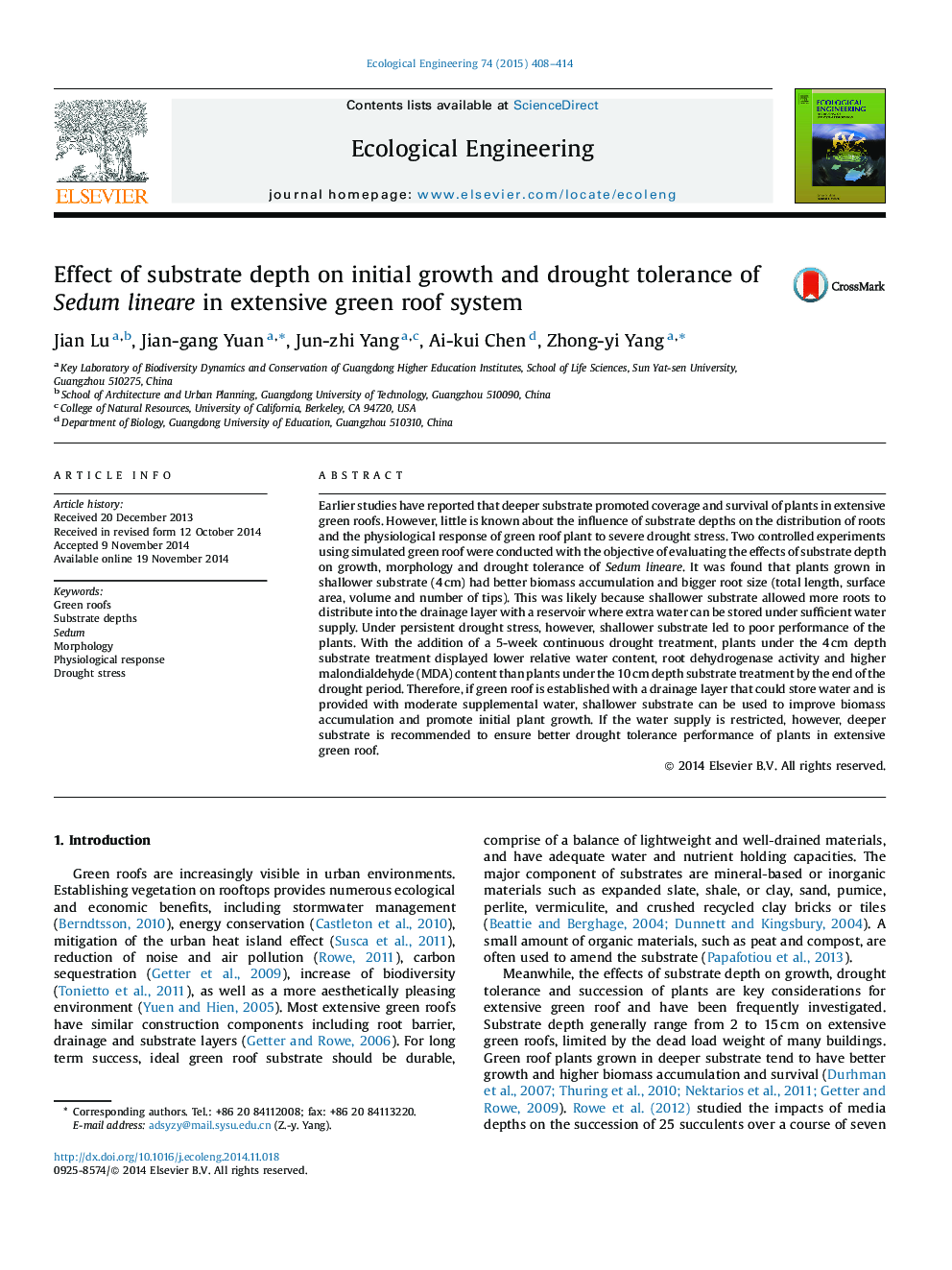| Article ID | Journal | Published Year | Pages | File Type |
|---|---|---|---|---|
| 4389334 | Ecological Engineering | 2015 | 7 Pages |
Earlier studies have reported that deeper substrate promoted coverage and survival of plants in extensive green roofs. However, little is known about the influence of substrate depths on the distribution of roots and the physiological response of green roof plant to severe drought stress. Two controlled experiments using simulated green roof were conducted with the objective of evaluating the effects of substrate depth on growth, morphology and drought tolerance of Sedum lineare. It was found that plants grown in shallower substrate (4 cm) had better biomass accumulation and bigger root size (total length, surface area, volume and number of tips). This was likely because shallower substrate allowed more roots to distribute into the drainage layer with a reservoir where extra water can be stored under sufficient water supply. Under persistent drought stress, however, shallower substrate led to poor performance of the plants. With the addition of a 5-week continuous drought treatment, plants under the 4 cm depth substrate treatment displayed lower relative water content, root dehydrogenase activity and higher malondialdehyde (MDA) content than plants under the 10 cm depth substrate treatment by the end of the drought period. Therefore, if green roof is established with a drainage layer that could store water and is provided with moderate supplemental water, shallower substrate can be used to improve biomass accumulation and promote initial plant growth. If the water supply is restricted, however, deeper substrate is recommended to ensure better drought tolerance performance of plants in extensive green roof.
